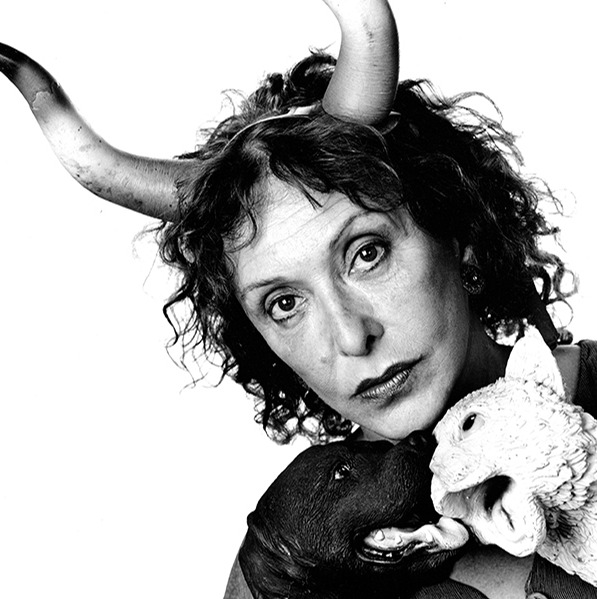
Carolee Schneemann
Carolee Schneemann was a pioneering American multidisciplinary artist who worked with a variety of media, including performance, film, painting, and installation. She is best known for her provocative and groundbreaking work that challenged traditional gender roles and explored sexuality, identity, and the human body. She passed away on March 6, 2019, leaving behind a transformative body of work that continues to shape conversations around gender, the body, and the boundaries of artistic expression.
Early Life and Formative Years
Carolee Schneemann was born on October 12, 1939, in Fox Chase, Pennsylvania. She embarked on her artistic journey at a young age, studying at Bard College before transferring to Columbia University, where she immersed herself in art and philosophy. During the late 1950s, she delved into New York's avant-garde art scene, a pivotal moment that would shape her groundbreaking career.
In this vibrant artistic milieu, Schneemann encountered influences ranging from Abstract Expressionism to the emerging Fluxus movement. While her early works primarily engaged with painting, her deep involvement in the downtown art scene prompted an evolution toward performance and experimental film, ultimately leading to her significant contributions to feminist art.
Pioneering Performance and Body Art
Carolee Schneemann was a trailblazer in the realm of performance and body art. After completing her MFA in painting at the University of Illinois in 1961, she moved to New York. Since then, she challenged conventional artistic norms with her provocative performances, daring to explore the body as both subject and medium. Her iconic work, "Meat Joy" (1964), blurred boundaries between the human and the artistic, signifying a pivotal moment in the history of the genre. In this audacious piece, participants, scantily clad, engaged with diverse materials like raw fish, chickens, sausages, wet paint, plastic, rope, and paper scraps. "Meat Joy" was emblematic of Schneemann's persistent theme of women's agency over their bodies and sexuality, challenging societal taboos and advocating for women's unabashed expression of sensuality.
Schneemann's commitment to embodying personal and political narratives through her work was encapsulated in "Interior Scroll" (1975), a performance where she read from a scroll extracted from her vagina. This audacious act was a profound commentary on the female body, challenging societal norms and contributing to the burgeoning feminist art movement.
Carolee Schneemann's Visionary Art: Beyond the Performance Stage
In the 1960s and 1970s, Carolee Schneemann delved into diverse artistic realms, embracing collage, assemblage, film, and photography. Her inspiration stemmed from dreams, tapping into the rich imagery and sounds of her unconscious mind. Encompassing environments, happenings, and concretions, her works often integrated elements of motorization. Early paintings, some featuring motors or mounted on wheels, revealed a profound connection to movement, influenced by the legacy of Futurism. This evolved into a logical progression, as Schneemann incorporated actual moving parts and machinery into her paintings, establishing a distinctive artistic territory. Notably, this innovative approach set her apart from male contemporaries in the New York art scene, emphasizing her boundary-pushing vision.
Artistic Legacy and Impact
Carolee Schneemann's artistic legacy extends beyond her groundbreaking performances. Her explorations in painting, photography, and installation art also left an indelible mark on the art world. Schneemann's work has been exhibited in museums and galleries around the world, including the Museum of Modern Art in New York, the Centre Georges Pompidou in Paris, and the Hamburger Bahnhof in Berlin.
Her work is included in major museum collections worldwide, such as the Centre Pompidou, the Museum of Modern Art in New York, Tate Modern in England, Museum der Moderne Salzburg in Austria, San Francisco Museum of Modern Art in California, and the Museo Nacional Centro de Arte Reina Sofía in Spain.
Schneemann's impact is evident in her recognition as a recipient of prestigious awards. In 2017, she was awarded the Golden Lion at the 57th Venice Biennale for her lifetime achievement. Carolee Schneemann was a trailblazer for feminist artists, and her work continues to inspire and influence contemporary artists today.
Years:
Born in 1939
Country:
United States of America, Fox Chase, Pennsylvania
Gallery: